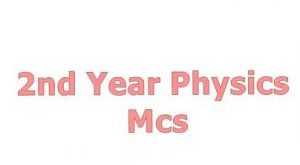After studying electro physics, we are going to discuss all Physics Chapter 17 Deformation of Solids MCQs with Answers 2nd Year. Solids are made of different atoms and molecules. Solids are classified into 4 types based on the arrangement of molecules inside them. Crystalline, Amorphous, Crystal Lattice and Polymeric Solids are the types. Elasticity is another important term that means when an external force is applied to a solid, it changes the position, shape, and length. But when this external force is removed, the solid moves back to its original shape and it is known as Elasticity. Stress and Strain are important terms related to solids. Elasticity has three moduli i.e. Young’s Modulus, Bulk Modulus, and Shear Modulus. Elastic Limit and Hooke’s Law are other important terms. Energy Band Theory is one of the most important theories related to Solids. Then we will study semiconductors and superconductors. Solids have some magnetic properties including Diamagnetism, Paramagnetism, and Ferromagnetism. The chapter ends with Magnetic Hysteresis. So, this is a brief introduction to the Deformation of Solids.
Physics Chapter 17 Deformation of Solids MCQs with Answers 2nd Year

 Online Exams Tests Preparation
Online Exams Tests Preparation


